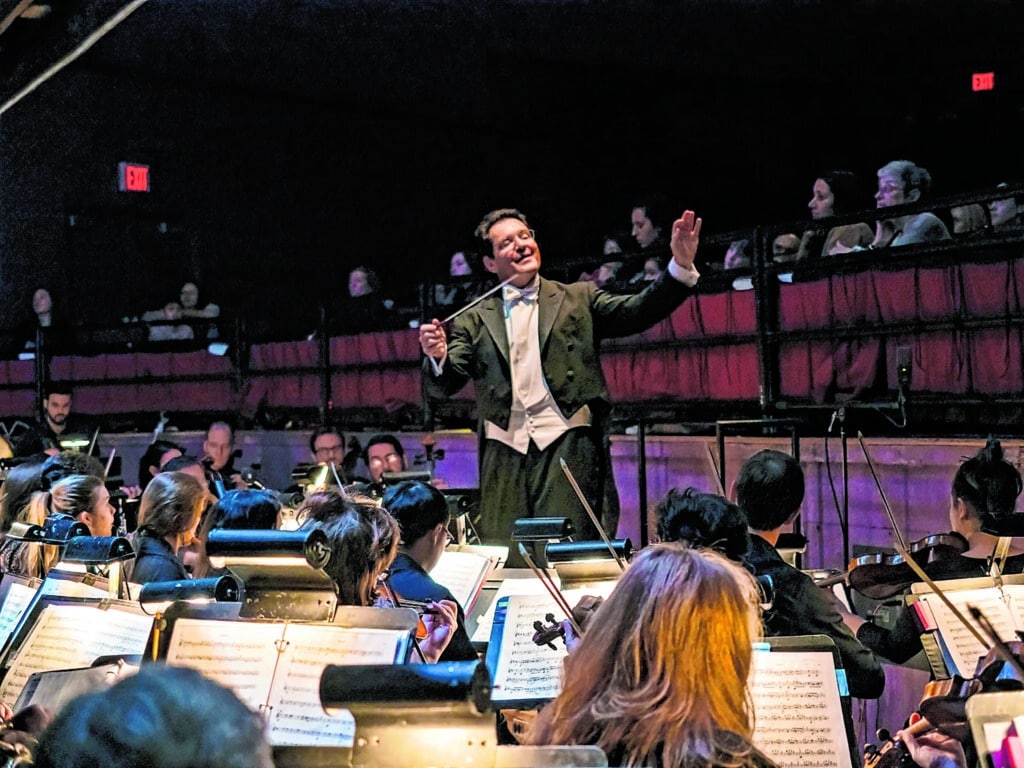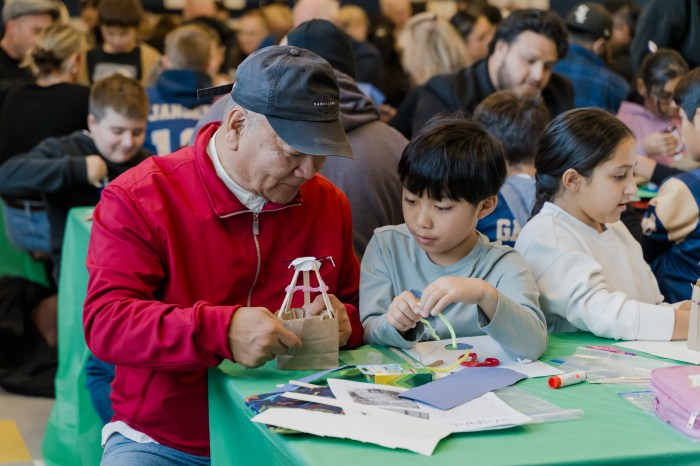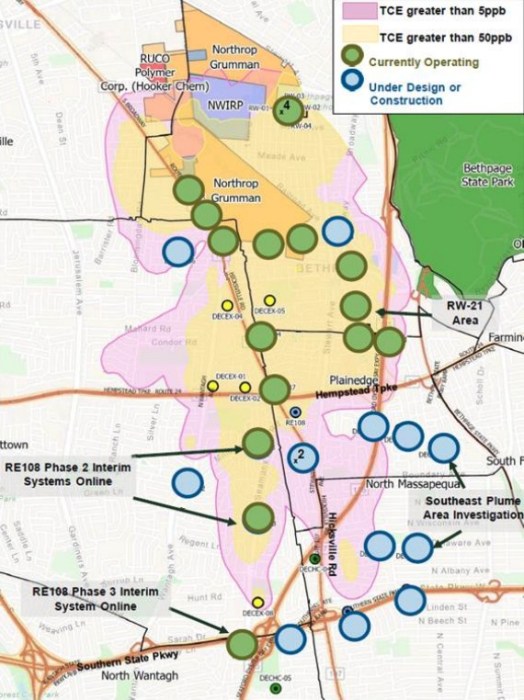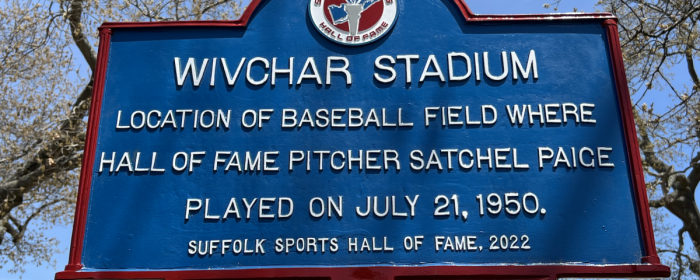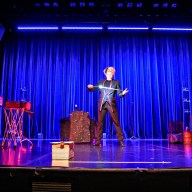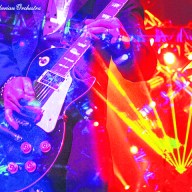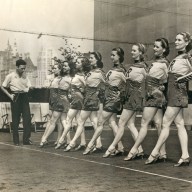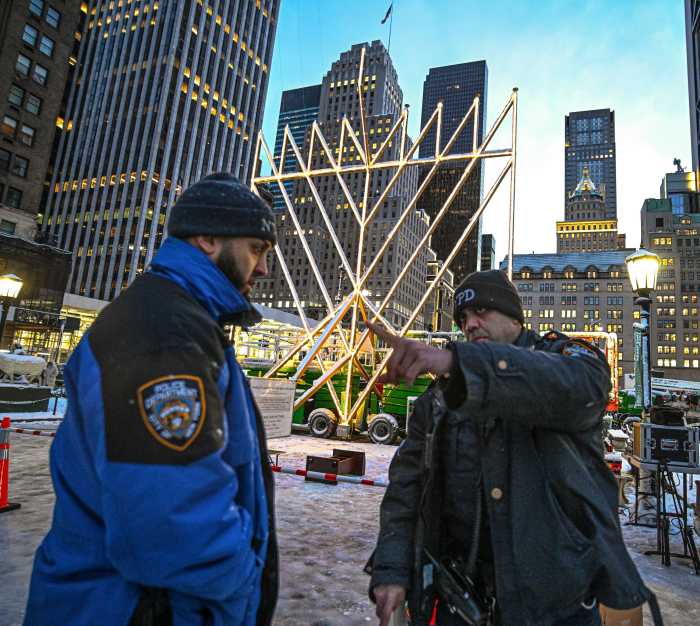Massapequa Philharmonic’s David Bernard named to post

David Bernard leading “The Nutcracker”
(Photo courtesy of David Bernard)
When David Bernard ascends to the conductor’s podium at the Tilles Center for the Performing Arts on Dec. 17 and 18 to lead the Eglevsky Ballet’s presentation of “The Nutcracker,” it will be as its new music director. While Bernard’s affiliation with the Eglevsky Ballet goes back to his first working with the troupe while conducting the Massapequa Philharmonic during the 2017 performance of “The Nutcracker” at the Tilles Center, the timing for this new appointment couldn’t be more serendipitous it also marks the return of the Eglevskky Ballet having live music for its performances.
It’s a moment the Great Neck native is well aware of and one that he’s grateful to the Eglevsky Ballet for allowing him to be a part of.
“I’m always trying to build up culture with ways in which to make that part of the fabric of Long Island,” he said. “I’m always impressed with the idea of bringing live music back to the Eglesvsky Ballet, which is the preeminent production of ‘The Nutcracker’ on Long Island. But the Eglevsky is more than just this production. It’s more than that—it’s a full ballet company with professional dancers and a ballet school. That’s the tradition—the big ballet companies are always a combination of the performing arts and a school. Music is such an important and critical part of ballet. Bringing live music to Long Island for this ‘Nutcracker’ and the expanded role with Eglevsky is just such an important thing for Long Island but also an exciting thing for me.”
It just so happens that Pyotr Ilyich Tchaikovsky’s “The Nutcracker” is the perfect production for Bernard to make his music director debut with. It was the first ballet he conducted a philharmonic orchestra to back when he was a 20-year-old conductor and he is a self-described fanatic about the Tchaikovsky masterpiece dating back to the first time he saw the George Balanchine production performed in Manhattan by the New York City Ballet when Bernard was a mere five years old. In conducting the Park Avenue Chamber Symphony for this event, Bernard admits to it being quite the double-tiered, creative high-wire act regardless of the fact that he’s essentially memorized the score for “The Nutcracker” given how often he’s conducted this program.

(Photo by Matt Dine)
He’s quick to point out the contrasts between conducting a full symphony concert and a ballet.
“The difference with conducting a ballet is that you are collaborating with the dancers,” he explained. “The dancers and choreography itself and how that works physically on stage is very much a part of what you’re doing with the musicians in the orchestra pit. It’s important to be able to deal with tempo and pacing in a way that is synergistic with the physical dancing on stage. There is poetry in dance and there is poetry in music. When you have both dance and music working simultaneously, they have to dance together. And so it’s important to be able to pace that. It’s the pacing of the musical narrative in a consistent and collaborative way with the dancing is something that happens constantly. It’s much more of a robust artistic endeavor because you are making music in a way that supports dance. That is something that requires an evolved skill set.”
The Eglevsky Ballet’s production of “The Nutcracker” features both professional dancers of the Eglevsky Ballet and students from the Eglevsky Ballet academy. New York City Ballet soloist Miriam Miller will dance the role of “The Sugar Plum Fairy” and the role of her “Cavalier” will be danced by New York City Ballet principal dancer. Tying it all together will be sumptuous sets, costumes and Long Island’s only automated 25-foot growing Christmas tree. Consider Bernard to be the head cheerleader who love of “The Nutcracker” has him enthusiastically sharing its greatness and why it resonates so much with him and audiences around the world.
“What Tchaikovksy did in this ballet is he figured out a way to write and deliver music that truly does bring to life the drama in this ballet in ways that are just absolutely fantastic,” Bernard said. “He does this constantly. He’s an innovator. If you want to see how ballet music is so important to the narrative, the story and the drama, you can look at this section where the Christmas tree grows to a gigantic size. In ‘The Nutcracker,’ you have to figure out how the orchestra, staging, blocking, dancing and scenery can make a Christmas tree grow from regular size to something fantastic and huge. It’s really hard to do because you don’t have CGI, you don’t have all the stuff you have in the movies. You have staging, scenery, an orchestra and dancers—that’s what you have. And so what makes this so spectacular is what Tchaikovsky does.”

(Photo courtesy of the Eglevsky Ballet)
Bernard added, “When we’re talking about ‘The Dance of the Sugar Plum Fairy,’ he came up with using the celesta to make that sound. There was no recognized way to portray a sugar plum fairy until Tchaikovsky. And he’s the one who discovered the celesta at a small music shop in Paris. It’s because of Tchaikovsky that we know the sound of the celesta and associate it with the sugar plum fairy. Tchaikovsky really did bring his A game in so many ways—musically as a composer, but also as an innovator. For the audience it is a beautiful spectacle of art when you have the symphonic music and dance synergistically presented live to an audience. That takes it to the next level and it’s an absolutely beautiful thing and I’m always excited to be part of a production like that.”
The Eglevsky Ballet will be presenting the holiday classic “The Nutcracker” on Dec. 17 and Dec. 18 at the Tilles Center for the Performing Arts, 720 Northern Blvd., Greenvale. Visit www.tillescenter.org or www.eglevskyballet.org or call 516-299-3100 for more information.




